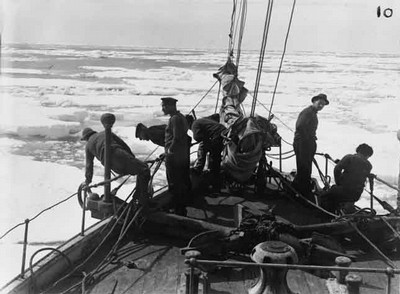Holding on to a set of beliefs is a normal reaction in changing times. However, when we don’t talk about them upfront, our projects will quickly sink to the bottom. Surprisingly, it’s the anchors we need to address.
Although permission is a word that is often used in a marketing context, it is a concept that is rarely used across organizational change projects. In our projects, permission is assumed. But when that assumption turns out to be false we end up pushing or rocking an anchored boat. That is never a good thing, because that’s when projects sink.
By the way, in the post-mortem analysis of such projects, insufficient permission is never mentioned: it’s either the boat, the captain, or the sea. If we were to look below the surface, we’d find out that it’s the anchor.
We need to talk about the anchors. This applies to both people and projects. They can be anchored in a set of beliefs about what is possible. If there is no agreement on letting go of those beliefs there is no common space from which the future can be created. Alas, the most common thing we do in those cases is pushing through… only to find out that we are making things worse instead of better.
Remember, organizational change projects are about a future of which no evidence exists in the present. So anchoring is a logical reaction, even when all the other conditions are being met: the boat, the crew and the weather conditions. Examining the anchor means that we need to address the psychological safety and the relationship of trust that is needed between the practitioner and the client.
Funny enough, bringing up the topic of trust and psychological safety cannot be done with risk-management, scope management or any other classic project management related technique. Rather, it is a matter of vulnerability and candor about the chances of success.
A good example of talking about the anchors was the invitation of Ernest Shackleton who was recruiting for an antarctic expedition more than a century ago. Supposedly he ran an ad in the London Times that read:
“Men wanted for hazardous journey. Small wages, bitter cold, long months of complete darkness, constant danger, safe return doubtful. Honour and recognition in case of success.”
No fewer than 5,000 people applied.
That’s the paradox of talking about the anchors: it is specifically by addressing the hazardous nature of the journey that people will engage. On the other hand, covering up the facts by window dressing and ‘good news’ will make people hold back and throw out their anchors.
We should work on permission first by being explicit about the cost of changing. It’s the best shot we have at keeping our projects afloat.


